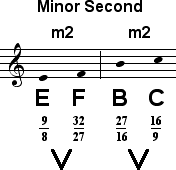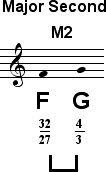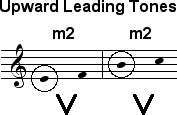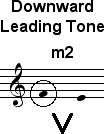

The diatonic naturals present interesting practical problems which are addressed by the invention known as accidentals.
The use of accidentals, contrary to the implication of the word, involves the intentional modification of certain notes to specify other tones. Why should notes be modified, and which tones should be specified? Some history helps us answer these questions. Our attention is first drawn to the infamous interval existing between the two end tones of the Western diatonic system.



This interval, the augmented fourth, is also called the tritone, because it spans exactly three wholesteps.

Western musicians and theorists throughout the ages have considered this interval to be both melodically and harmonically problematic. It divides the octave nearly in half, residing in between the Perfect Fifth and the Perfect Fourth. A fugitive between its perfect neighbors, the tritone was historically viewed as unnatural sounding and defective, in need of correction. It was firstly this desire to correct the tritone which led to the development of accidentals.
Secondly, the two intervals existing between pairs of end tones of the diatonic system also raised issues eventually leading to the development of accidentals.


These are the natural Minor Seconds, from E up to F and B up to C.

The smaller size of these intervals allowed for effective ascending melodic successions, which were deemed to have a stronger sense of arrival than comparable successions using a Major Second, such as F up to G.

Because of the closer proximity of the lower tone to the higher, the lower tone of an ascending melodic Minor Second came to be referred to as an upward leading tone.

Due to the tritone problem, the direction of leading tones favored movement away from both B and F. Thus, the ascending second B - C was preferred over the descending halfstep C - B, while the descending F - E was favored over the ascending E - F. For example, the melodic succession from F to E in the Phrygian mode was considered an instance of a downward leading tone F.

The effectiveness of the melodic leading tone was unfortunately limited to relations between only two pairs of tones in the system of diatonic naturals; however, it was obvious that an expansion of the system would allow for the use of more leading tones. Harmonic concerns aside, the desire for more leading tones, along with the desire to correct tritones, lead to the development of accidentals.
NEXT: Tritone Correction